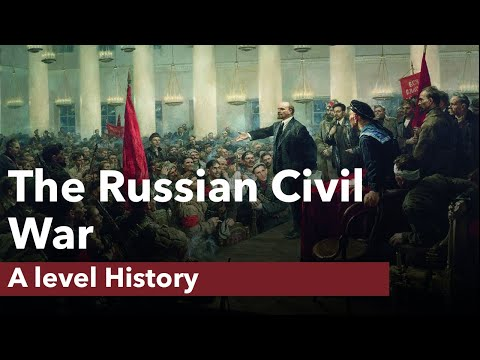
Introduction:
The Russian Civil War was a significant and complex conflict that took place in Russia after the end of World War I and the fall of the Russian Empire. It lasted from 1917 to 1923 and involved various groups with different goals fighting for control of the country. This article explores the key aspects of this tumultuous period in Russian history.
1. Aftermath of the Russian Revolution
In 1917, a revolution led to the overthrow of the Russian monarchy and the rise of the Bolshevik Party, led by Vladimir Lenin. The country was in a state of chaos, with different groups vying for power. The Bolsheviks, who wanted to create a communist society, gained control of the government.
2. The Red Army vs. The White Army
The Russian Civil War was essentially a struggle between two main factions: the Red Army (Bolsheviks) and the White Army (anti-Bolshevik forces). The Red Army aimed to establish a socialist state, while the White Army consisted of a diverse range of groups, including monarchists, liberals, and foreign interventionists, who opposed the Bolsheviks.
3. Foreign Intervention:
During the civil war, several foreign countries, including the United States, Great Britain, France, and Japan, intervened on the side of the White Army. They hoped to prevent the spread of communism and protect their interests in Russia. This foreign intervention further complicated the conflict.
4. Geography of the Conflict:
The civil war was not limited to one region; it spread across vast territories of Russia. Different areas saw various factions fighting for control. This geographical spread made the conflict more challenging to manage and prolonged its duration.
5. War's Impact on the Population:
The Russian Civil War had a devastating impact on the civilian population. The fighting led to widespread violence, famine, and disease. Millions of people lost their lives, and many more were displaced from their homes. The war left deep scars on the nation.
6. Rise of the Red Army:
Led by prominent figures like Leon Trotsky, the Red Army gradually gained strength and organization. They employed effective propaganda and utilized their control over key industrial centers to bolster their position.
7. End of the War:
The Red Army's superior organization, internal support, and effective leadership eventually gave them the upper hand. By 1923, the Bolsheviks had largely defeated the White Army and its foreign supporters. The war ended with the establishment of the Soviet Union, a communist state.
8. Long-Term Effects:
The Russian Civil War brought about significant changes in Russia's political and social landscape. It solidified the Bolsheviks' rule and led to the establishment of a communist government. The war also resulted in economic challenges and strained international relations due to the foreign intervention.
9. Cultural and Social Changes:
The civil war brought about cultural and social shifts. It saw the rise of new art forms, such as Soviet cinema and literature. Additionally, policies like the New Economic Policy (NEP) were introduced, allowing for some limited private enterprise.
10. Legacy and Lessons:
The Russian Civil War left a lasting legacy in Russian history. It showcased the complexities of political struggles, the effects of foreign intervention, and the immense human suffering that comes with armed conflict. It also demonstrated how ideology can shape a nation's destiny.
Conclusion:
The Russian Civil War was a period of immense upheaval that reshaped the course of Russia's history. It marked the rise of the Bolsheviks, the establishment of the Soviet Union, and the challenges of rebuilding a war-torn nation. The war's impact on society, culture, and governance continues to influence Russia's trajectory to this day.


Comments